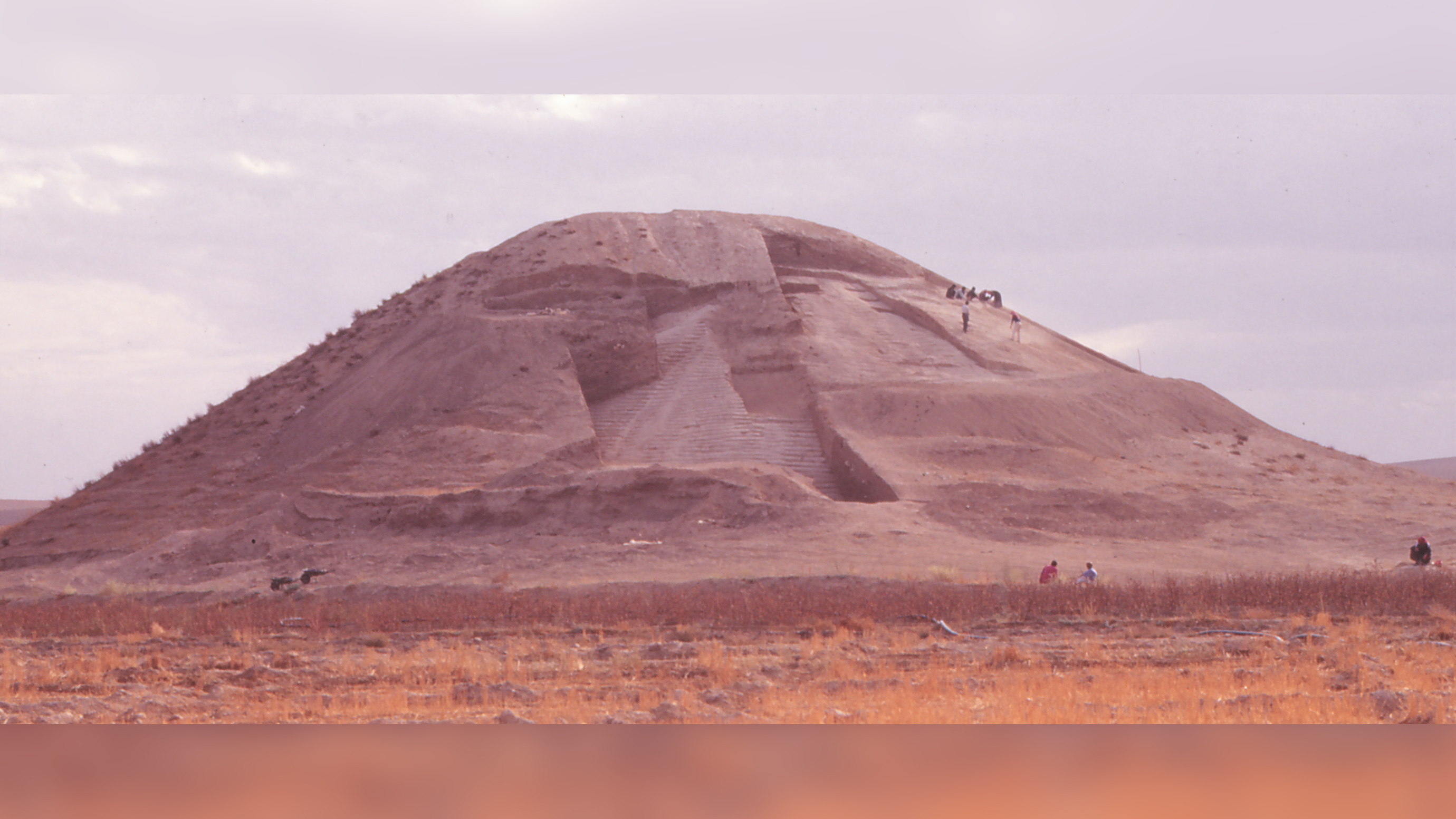Pyramid-shaped mound holding 30 corpses may be world's oldest war monument

A huge burial mound holding the corpses of at least 30 warriors in Syria could be the oldest war memorial ever discovered, dating back at least 4,300 years at the now submerged site of Tell Banat, said a team of archaeologists.
The memorial is also the first example of a particular type of monument described in ancient inscriptions from Mesopotamia in which the bodies of either enemies or local battle dead are piled up to form a highly organized structure.
This discovery also shows "that ancient people honored those killed in battle, just as we do," Anne Porter, a professor of ancient Near and Middle Eastern Civilizations at the University of Toronto, said in a statement. "We do not know whether they were the victors or the losers of that battle. We do know that they [the people from Tell Banat] took the bodies of the dead from some other place, perhaps long after the event, and interred them in a huge mound that was visible for miles around," Porter said in the statement.
Related: 25 grisly archaeological discoveries
The memorial looks a bit like the step pyramid of Djoser in Egypt except that the layers of the monument are made of dirt and gypsum instead of stone, the archaeologists wrote in the paper, published May 28 in the journal Antiquity. The people who lived in the area in modern times called the mound the "white monument" because the gypsum causes the monument to glisten in sunlight, the archaeologists wrote.

Though the site was excavated between 1988 and 1999 by a team led by Porter and Thomas McClelland, who at the time were both archaeologists with the Euphrates Salvage Project, researchers didn't fully understand its purpose until now. They carried out those excavations before the site was flooded by the construction of the Tishreen Dam.
In the time since, those same archaeologists, along with undergraduate students at the University of Toronto, have closely examined the finds, determining that the site was likely a war memorial, possibly the oldest known example in the world. They also discovered the memorial was built on top of an earlier structure.
Sign up for the Live Science daily newsletter now
Get the world’s most fascinating discoveries delivered straight to your inbox.
A dead army
The researchers could tell the bodies were meticulously interred. "Collections of human bone were deposited in the fill as the horizontal stages [of the monument] were built up. They were placed directly on the soil, with no special covering or demarcation," the team wrote in the Antiquity paper. "Although small, fragmentary and somewhat diffuse, the bones were nevertheless intentionally placed in discrete groupings" the archaeologists wrote.
The remains are fragmentary and in many cases the age and sex of the deceased could not be identified. Those that could be identified were male and ranged from grown adults to as young as 8 to 10 years old. Why someone between 8 and 10 years old would be placed in the war memorial is not clear.
The bones appear to have been dug up and reinterred at the memorial. "The bones could have come from an old battleground, or from a cemetery. Regardless, they were selected, arranged and ultimately monumentalized with care, long after death," the archaeologists wrote in their paper.
Some of the deceased were buried with kunga, which were "a donkey-like equid breed seen pulling vehicles in ancient art," the statement said. Those soldiers buried with the kunga may have served as wagon drivers, the archaeologists wrote.
Additionally, the team found pellets buried near some of the deceased. Ancient people often used pellets fired from slings as weapons in the ancient world and these weapons may symbolize the role that the deceased played when they were alive.
"We recognized that there was a distinct pattern in the burials — pairs of bodies with skins of equids in one part of the monument, single individuals with earthen pellets in the other," Porter said in the statement, adding that the arrangement suggests the individuals belonged to an ancient army. An organized ancient army likely would have been divided into different units such as a wagoneer unit and units of foot soldiers equipped with slings and pellets.
"Patterns emerge suggesting that the individuals placed in [the memorial] not only participated in battle but did so in a formalized way: They were part of an organized army, divided into wagoneers and foot soldiers," the archaeologists wrote.
The team also found a model of a covered wagon, a figurine depicting a kunga and a wheel made out of clay with the deceased.
Originally published on Live Science.

Owen Jarus is a regular contributor to Live Science who writes about archaeology and humans' past. He has also written for The Independent (UK), The Canadian Press (CP) and The Associated Press (AP), among others. Owen has a bachelor of arts degree from the University of Toronto and a journalism degree from Ryerson University.










